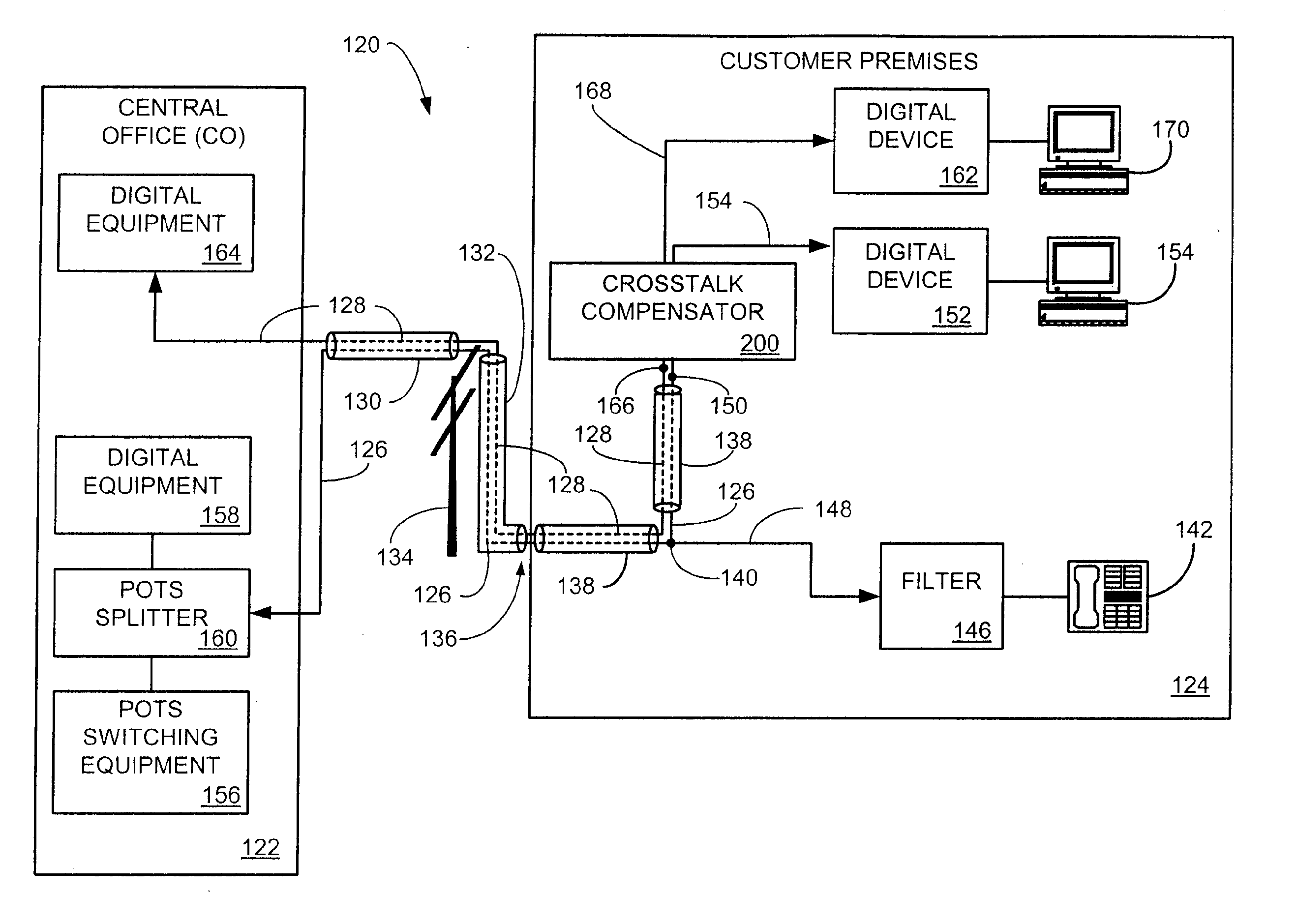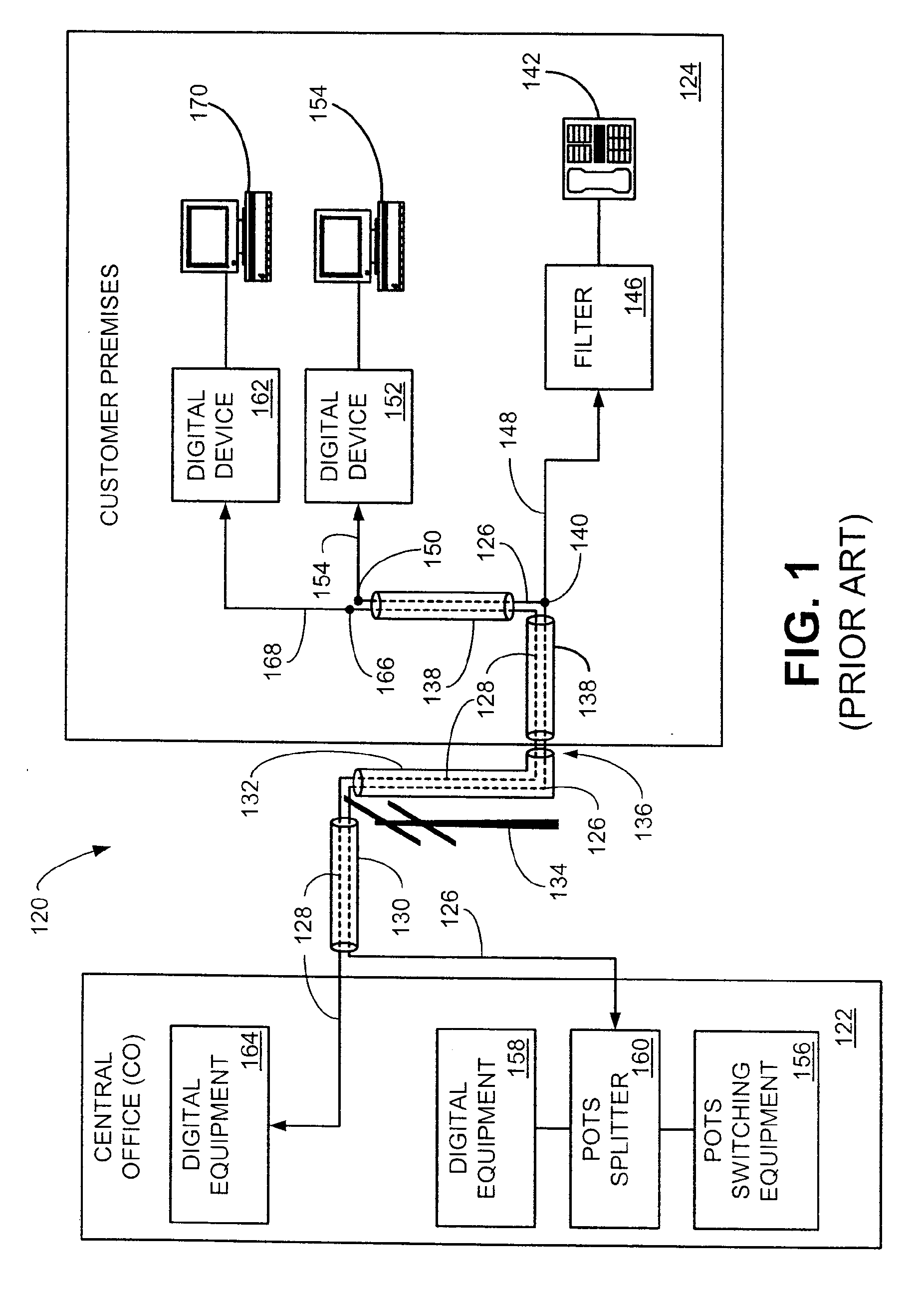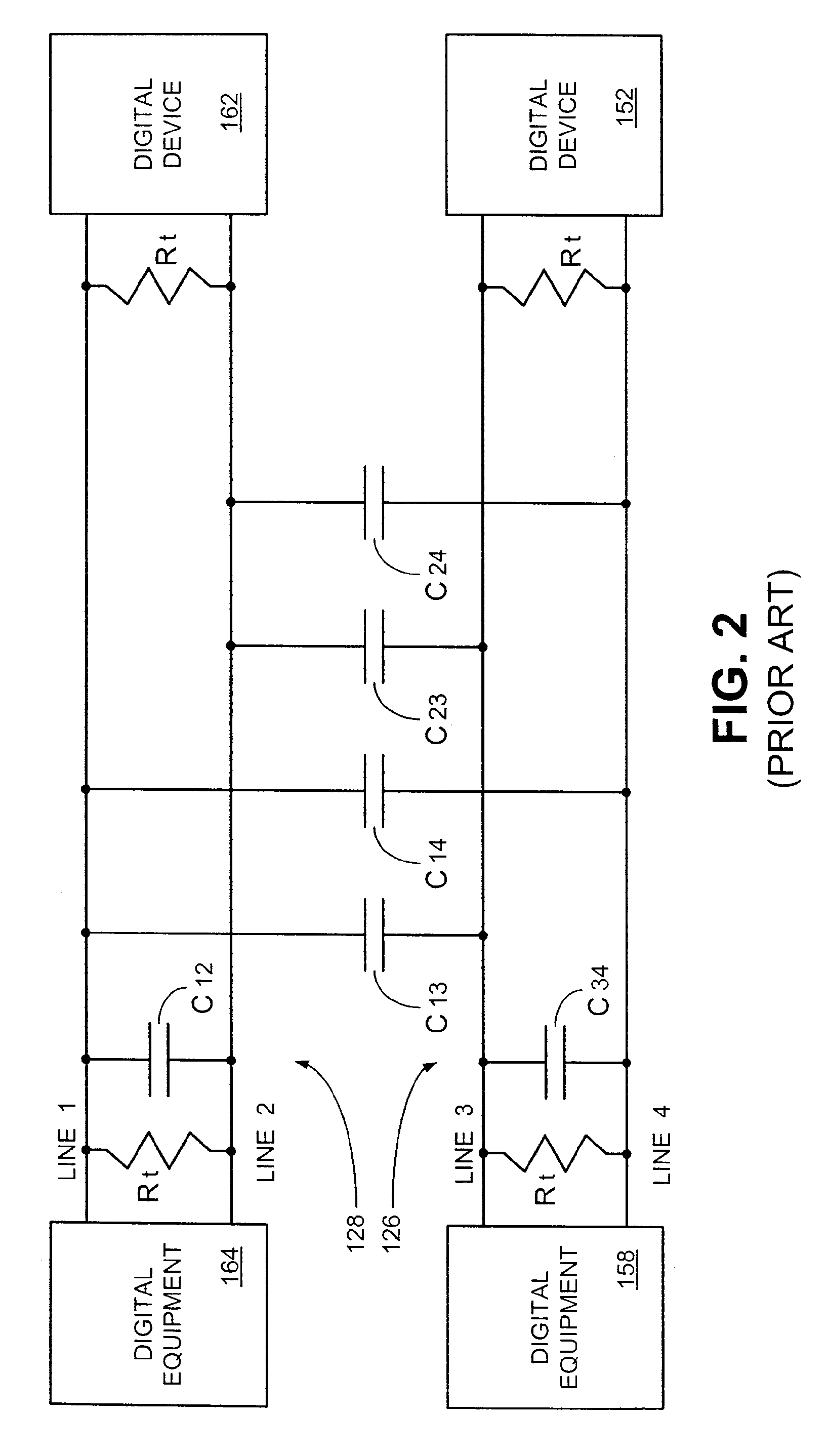System and Method for Premises End Crosstalk Compensation
a crosstalk compensation and premises technology, applied in the field of communication, can solve problems such as mismatch in mutual coupling capacitance, and achieve the effect of reducing or eliminating mismatch
- Summary
- Abstract
- Description
- Claims
- Application Information
AI Technical Summary
Benefits of technology
Problems solved by technology
Method used
Image
Examples
first alternative embodiment
IV. First Alternative Embodiment
[0077]FIG. 7 shows an alternative embodiment of a crosstalk compensator in accordance with the present invention, which is generally denoted by reference numeral 201. The crosstalk compensator 201 contains only one parallel grouping of compensating capacitors CC1, CC2 and CC3, denoted as CX. During installation of the crosstalk compensator 201, the installer would first determine if there was any significant mismatch between mutual coupling capacitances C13 and C14 (FIG. 5) which would cause undesirable levels of PEXT interference. If there was a significant degree of mismatch between C13 and C14, the installer would determine which was the smaller of C13 and C14. The installer would then connect the crosstalk compensator 201 to the appropriate lines such that undesirable levels of PEXT interference induced from subscriber loop 126 onto line 1 of loop 128 would be mitigated or eliminated. For example, if the installer determined that C13 was less than...
second alternative embodiment
V. Second Alternative Embodiment
[0082] A second alternative embodiment of a crosstalk compensator in accordance with the present invention is illustrated in FIG. 8 and generally denoted by reference numeral 202. This alternative embodiment of the crosstalk compensator 202 is similar to the first alternative embodiment of the crosstalk compensator 201 (FIG. 7) in that only a single group of compensating capacitors CC1, CC2 and CC3 are provided, denoted as CX. With this alternative embodiment of the crosstalk compensator 202, the installer would determine if there was a mutual coupling capacitance mismatch as described hereinabove and then select the compensating capacitors CC1, CC2 and / or CC3 by closing switches S1, S2 and / or S3, respectively such that CX is added to the desired mutual coupling capacitance in the above-described manner to eliminate any undesirable significant PEXT interference.
[0083] This alternative embodiment of the crosstalk compensator 202 has two additional lin...
third alternative embodiment
VI. Third Alternative Embodiment
[0085]FIG. 9 illustrates a third alternative embodiment of the crosstalk compensator 203. This third alternative embodiment of the crosstalk compensator 203 is similar to the second alternative embodiment of the crosstalk compensator 202 (FIG. 8) with the addition of a processor-based line selection switch system. This alternative embodiment of the crosstalk compensator 203 of FIG. 9 would be installed in a manner similar to the crosstalk compensator 202 (FIG. 8). However, crosstalk compensator 203 employs a processor-based switch 250 which has at least a processor 252 and line switcher 254. The processor 252 (as well as the other processors described later in this document) can be implemented via, for example but not limited to, a conventional general purpose microprocessor, a specially designed specific application processor, or by other processors typically employed in the arts. Two line switches (not shown), equivalent to line switches SA and SB (...
PUM
 Login to View More
Login to View More Abstract
Description
Claims
Application Information
 Login to View More
Login to View More - R&D
- Intellectual Property
- Life Sciences
- Materials
- Tech Scout
- Unparalleled Data Quality
- Higher Quality Content
- 60% Fewer Hallucinations
Browse by: Latest US Patents, China's latest patents, Technical Efficacy Thesaurus, Application Domain, Technology Topic, Popular Technical Reports.
© 2025 PatSnap. All rights reserved.Legal|Privacy policy|Modern Slavery Act Transparency Statement|Sitemap|About US| Contact US: help@patsnap.com



